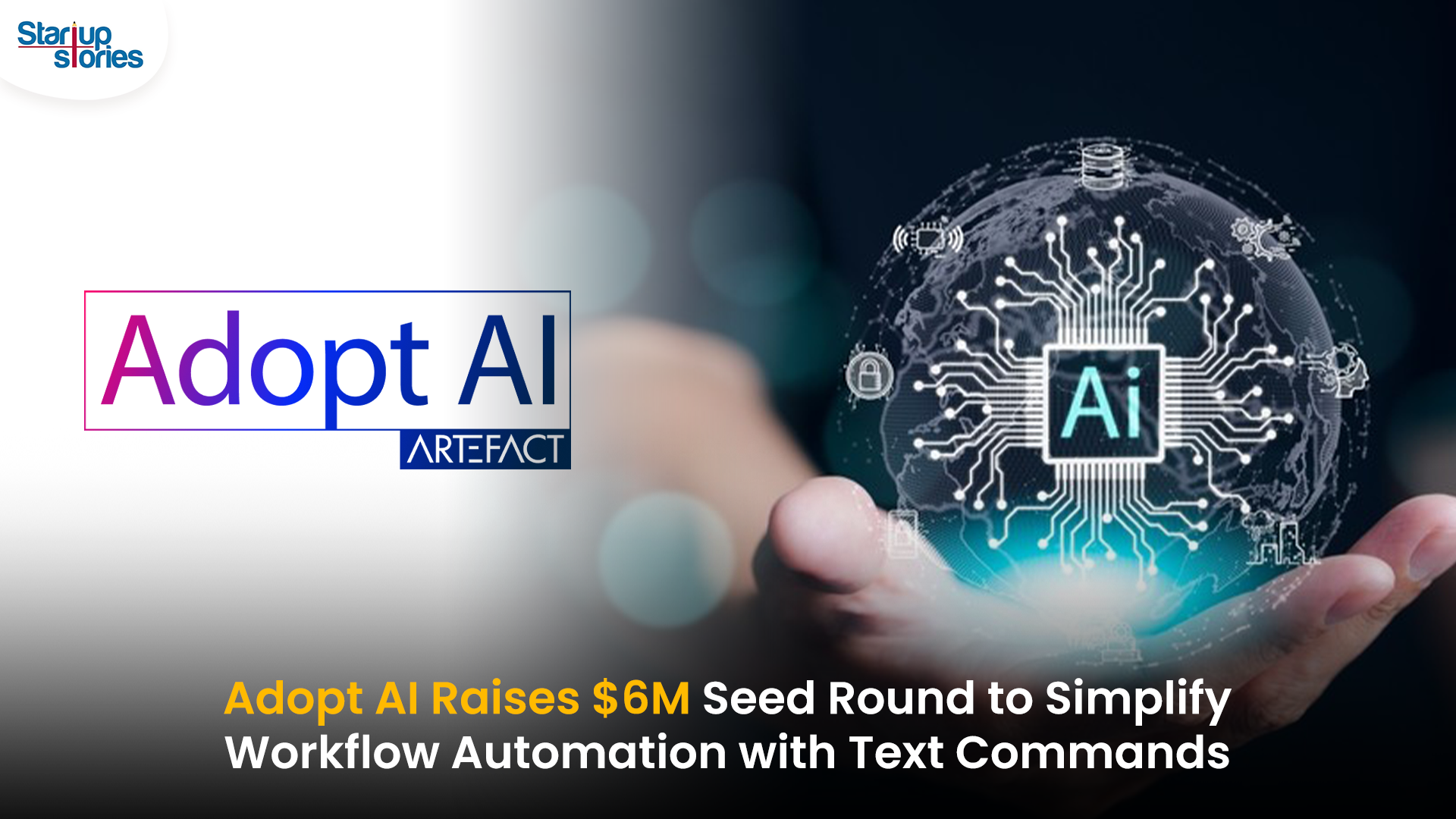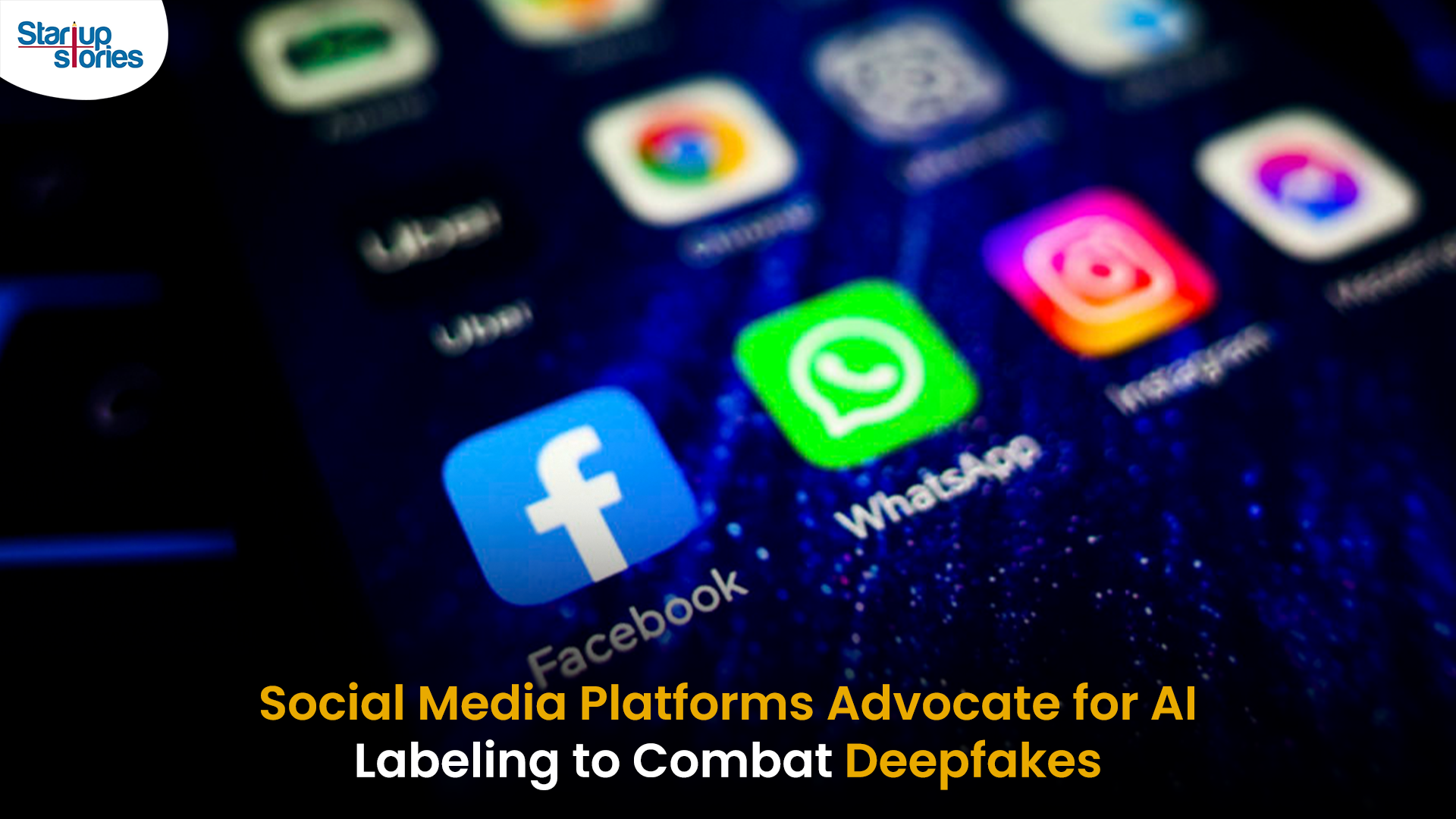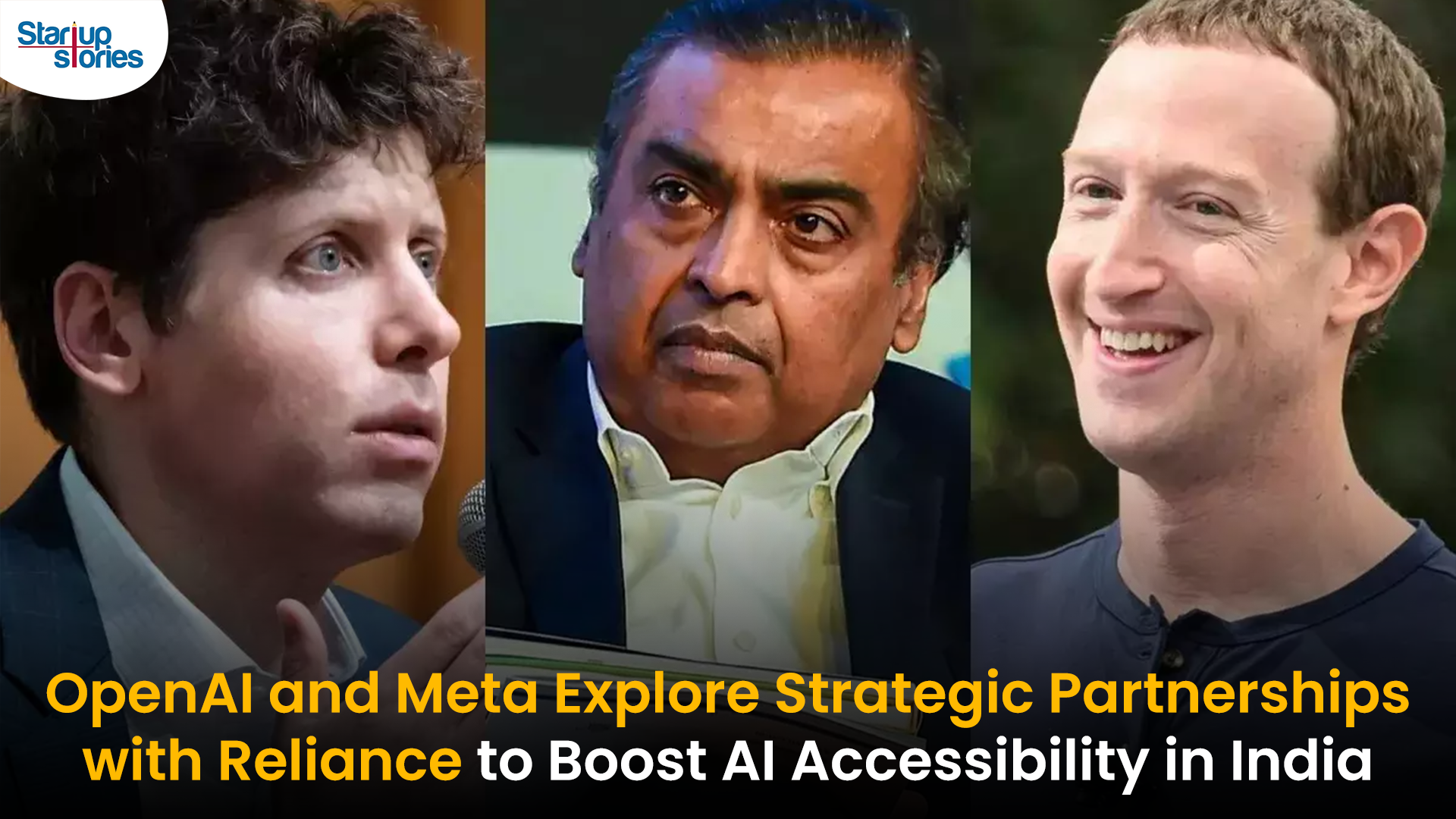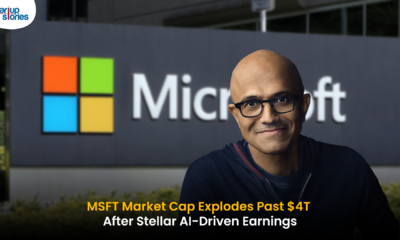Artificial Intelligence
Microsoft Unveils Two New Chips to Boost AI Performance and Enhance Security in Data Centers!

At its annual Ignite conference, Microsoft revealed two cutting-edge infrastructure chips aimed at accelerating artificial intelligence (AI) operations and strengthening data security within its data centers. This move underscores Microsoft’s growing commitment to developing in-house silicon tailored for advanced computing and AI applications.
Custom Silicon for AI and Security
Following the lead of rivals like Amazon and Google, Microsoft has been heavily investing in custom chip design to optimize performance and cost efficiency. The new chips are part of its strategy to reduce dependency on traditional processors from manufacturers like Intel and Nvidia, while meeting the high-speed demands of AI workloads.
Overview of the New Chips
The two chips introduced are purpose-built for Microsoft’s data center infrastructure:
- Azure Integrated HSM (Hardware Security Module):
-
-
- Focuses on enhancing security by securely managing encryption keys and critical security data.
- Scheduled for deployment in all new servers across Microsoft’s data centers starting next year.
- Designed to keep sensitive encryption and security data securely within the hardware module, thus minimizing exposure to potential cyber threats.
-
- Data Processing Unit (DPU):
-
- Consolidates multiple server components into a single chip designed for cloud storage tasks.
- Achieves up to 4x improved performance while using 3x less power compared to existing hardware.
- Focused on efficient cloud storage operations, enabling faster data processing and reduced latency.
Key Features and Benefits
Azure Integrated HSM
- Enhanced Data Security: Provides a dedicated environment for managing encryption keys, ensuring that sensitive information remains protected.
- Regulatory Compliance: Aligns with industry standards for data protection, making it suitable for organizations handling regulated data.
Data Processing Unit (DPU)
- Performance Optimization: The DPU’s architecture allows for significant energy savings while enhancing processing capabilities, which is crucial for AI-driven applications.
- Streamlined Operations: By integrating multiple functions into a single chip, the DPU simplifies server architecture, reducing complexity and potential points of failure.
Infrastructure Optimization
According to Rani Borkar, Corporate Vice President of Azure Hardware Systems and Infrastructure, this initiative is part of Microsoft’s broader vision to “optimize every layer of infrastructure.” These advancements ensure that data centers operate at the speed necessary to support complex AI systems, thereby enhancing overall operational efficiency.
Liquid Cooling for AI-Ready Data Centers
In addition to the new chips, Microsoft introduced an upgraded liquid cooling system for data center servers. This innovation is designed to lower temperatures in high-performance AI environments, providing scalable support for large-scale AI workloads. Effective cooling solutions are essential as AI applications often generate significant heat due to their intensive computational requirements.
Commitment to AI-Driven Cloud Services
By developing custom silicon and innovative infrastructure solutions, Microsoft aims to stay at the forefront of AI-driven cloud services. The introduction of these chips reflects a strategic shift towards in-house capabilities that enhance performance while ensuring security in an increasingly digital world.
Microsoft’s investment in custom hardware aligns with its broader goals of improving service delivery in its Azure cloud platform, which is crucial as businesses increasingly rely on cloud-based solutions for their operations.
Conclusion
With the unveiling of these two new chips, Microsoft reinforces its commitment to enhancing AI performance and security within its data centers. By focusing on custom silicon development, Microsoft not only aims to improve operational efficiency but also addresses the growing demand for secure processing capabilities in an era where data privacy and protection are paramount. As the company continues to innovate, it positions itself as a key player in the evolving landscape of cloud computing and artificial intelligence.
Artificial Intelligence
Adopt AI Secures $6 Million to Power No-Code AI Agents for Business Automation

Adopt AI, a San Jose and Bengaluru-based agentic AI startup, has raised $6 million in seed funding led by Elevation Capital, with participation from Foster Ventures, Powerhouse Ventures, Darkmode Ventures, and angel investors. The funding will be used to expand the company’s engineering and product teams and to scale enterprise deployments of its automation platform.
Founded by Deepak Anchala, Rahul Bhattacharya, and Anirudh Badam, Adopt AI offers a platform that lets businesses automate workflows and execute complex actions using natural language commands, without needing to rebuild existing systems. Its core products include a no-code Agent Builder, which allows companies to quickly create and deploy AI-driven conversational interfaces, and Agentic Experience, which replaces traditional user interfaces with text-based commands.
The startup’s technology is aimed at SaaS and B2C companies in sectors like banking and healthcare, helping them rapidly integrate intelligent agent capabilities into their applications. Adopt AI’s team includes engineers from Microsoft and Google, with Chief AI Officer Anirudh Badam bringing over a decade of AI experience from Microsoft.
The company has also launched an Early Access Program to let businesses pilot its automation solution and collaborate on new use cases.
Artificial Intelligence
Social Media Platforms Push for AI Labeling to Counter Deepfake Risks

Social media platforms are intensifying efforts to combat the misuse of deepfake technology by advocating for mandatory AI labeling and clearer definitions of synthetic content. Deepfakes, created using advanced artificial intelligence, pose significant threats by enabling the spread of misinformation, particularly in areas like elections, politics, and personal privacy.
Meta’s New Approach
Meta has announced expanded policies to label AI-generated content across Facebook and Instagram. Starting May 2025, “Made with AI” labels will be applied to synthetic media, with additional warnings for high-risk content that could deceive the public. Meta also requires political advertisers to disclose the use of AI in ads related to elections or social issues, aiming to address concerns ahead of key elections in India, the U.S., and Europe.
Industry-Wide Efforts
Other platforms like TikTok and Google have introduced similar rules, requiring deepfake content to be labeled clearly. TikTok has banned deepfakes involving private figures and minors, while the EU has urged platforms to label AI-generated media under its Digital Services Act guidelines.
Challenges Ahead
Despite these measures, detecting all AI-generated content remains difficult due to technological limitations. Experts warn that labeling alone may not fully prevent misinformation campaigns, especially as generative AI tools become more accessible.
Election Implications
With major elections scheduled in 2025, experts fear deepfakes could exacerbate misinformation campaigns, influencing voter perceptions. Social media platforms are under pressure to refine their policies and technologies to ensure transparency while safeguarding free speech.
Artificial Intelligence
Transforming India’s AI Landscape: OpenAI and Meta’s Collaborative Talks with Reliance Industries

OpenAI and Meta Platforms are reportedly in discussions with India’s Reliance Industries to explore potential partnerships aimed at enhancing their artificial intelligence (AI) offerings in the country. This development underscores India’s growing significance in the global AI landscape.
Key Aspects of the Discussions
- Partnership with Reliance Jio: One of the main focuses is a potential collaboration between Reliance Jio and OpenAI to facilitate the distribution of ChatGPT in India. This could enable wider access to advanced AI tools for businesses and consumers, leveraging Reliance’s extensive telecommunications network.
- Subscription Price Reduction: OpenAI is considering reducing the subscription cost for ChatGPT from $20 to a more affordable price, potentially just a few dollars. While it is unclear if this has been discussed with Reliance, such a move could significantly broaden access to AI services for various user demographics, including enterprises and students.
- Infrastructure Development: Reliance has expressed interest in hosting OpenAI’s models locally, ensuring that customer data remains within India. This aligns with data sovereignty regulations and addresses growing concerns about data privacy. A planned three-gigawatt data center in Jamnagar, Gujarat, is expected to serve as a major hub for these AI operations.
Market Implications
These potential partnerships reflect a broader trend among international tech firms aiming to democratize access to AI technologies in India. If successful, they could reshape India’s AI ecosystem and accelerate adoption across various sectors. As negotiations continue, stakeholders are closely monitoring how these alliances may impact India’s technological landscape and its position as a leader in AI innovation.














n5hgx
June 6, 2025 at 1:00 pm
where buy cheap clomiphene no prescription clomiphene reddit where can i get cheap clomiphene no prescription how can i get clomiphene where can i buy cheap clomid without prescription how can i get generic clomid without prescription how to get generic clomid price
binance Sign Up
July 18, 2025 at 9:02 pm
Thank you for your sharing. I am worried that I lack creative ideas. It is your article that makes me full of hope. Thank you. But, I have a question, can you help me?
binance
July 25, 2025 at 7:16 am
Your point of view caught my eye and was very interesting. Thanks. I have a question for you.
iwin
November 5, 2025 at 6:48 pm
iwin – nền tảng game bài đổi thưởng uy tín, nơi bạn có thể thử vận may và tận hưởng nhiều tựa game hấp
谷歌站群
November 7, 2025 at 1:09 am
专业构建与管理谷歌站群网络,助力品牌实现全域流量的强势增长。谷歌站群
MM88
November 11, 2025 at 4:29 am
Với giao diện mượt mà và ưu đãi hấp dẫn, MM88 là lựa chọn lý tưởng cho các tín đồ giải trí trực tuyến.
谷歌外推
November 11, 2025 at 8:48 am
采用高效谷歌外推策略,快速提升网站在搜索引擎中的可见性与权重。谷歌外推
站群程序
November 11, 2025 at 4:42 pm
搭载智能站群程序,自动化搭建与管理,为SEO项目提供核心驱动力。站群程序
GO88
November 20, 2025 at 3:20 pm
Tham gia cộng đồng game thủ tại Go88 để trải nghiệm các trò chơi bài, poker phổ biến nhất hiện nay.
J88
November 21, 2025 at 4:01 am
Đến với J88, bạn sẽ được trải nghiệm dịch vụ cá cược chuyên nghiệp cùng hàng ngàn sự kiện khuyến mãi độc quyền.
Kuwin
November 21, 2025 at 11:54 am
kuwin sở hữu kho game đa dạng từ slot đến trò chơi bài đổi thưởng, mang đến cho bạn những giây phút giải trí tuyệt vời.